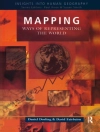One important change in the Brazilian policies is the Pacification. In recent years the government has invested in creating safer and more livable favelas. This generally starts with creating a UPP, a police post at a central location, from where the safety is maintained. Once this has been established the PAC, the government organisation for accelerating urban development in the favelas, starts to make plans to improve the quality of life in the favela: drinking water, electricity, sewage system and other basic systems. It is essential to include the growth of food in their policies.
Secondly, the discourse in urban agriculture shifts from the early stage in which every initiative is interesting, food production is a social activity and an estimated contribution to sustainability, towards the question how much food is actually produced within the city boundaries. Analyses show that the amount produced is very little. The follow-up question is how more food could be producedin the city? This is obviously also a matter of space. Current urban concepts do not offer enough space for food production and this implies new concepts need to be found. In the context of the favelas these new spaces need to be found on roofs.
Tabella dei contenuti
Preface.- Introduction.- Role of food in spatial planning and design.- Space for food in the city.- Networks and chains in the provision of food.- Policy Context: PAC.- Engagement of residents.- Development of an overall design strategy.- Development of the Food Roof.- Design of the roof.- Building a Food Roof in one week.- Interview with Marcelo Assunçao, Owner of the first Food Roof.- Conclusions and Outlook.
Circa l’autore
Dr. Rob Roggema, Landscape Architect, is an international renowned design-expert on climate adaptation, renewable energy planning and urban agriculture. He holds positions at several universities in the Netherlands and Australia, State and Municipal governments and design consultancies. Dr. Roggema is the Director of Cittaideale, a research office for adaptive design and planning. In 2008 he received the scientific award for best paper at the Sustainable Building conference in Melbourne.












